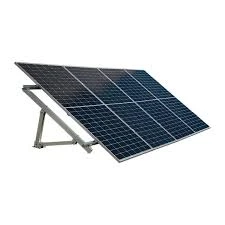Cost Analysis of 18 Percent Efficiency Solar Panels and Their Financial Benefits for Homeowners
Understanding the Costs of 18% Solar Panels
In recent years, solar energy has emerged as a leading renewable energy source, with solar panels becoming a common feature in residential and commercial properties. Among the variety of solar panels available, those with an efficiency rate of around 18% have gained popularity due to their balance of cost and performance. Understanding the costs associated with 18% solar panels can help potential buyers make informed decisions when considering solar energy systems for their properties.
What Are 18% Solar Panels?
Solar panel efficiency is measured by the percentage of sunlight that can be converted into usable electricity. An 18% efficiency rating indicates that the solar panel can convert 18% of the sunlight that hits its surface into electrical energy. While there are more efficient solar panels available, typically exceeding 20% efficiency, 18% panels offer a more economical choice without significantly sacrificing performance, particularly in residential settings where roof space may not be maximized.
Cost Breakdown of 18% Solar Panels
The cost of solar panels is influenced by several factors, including the type of technology used, the brand, installation fees, and local incentives. On average, the cost of installing solar panels can range from $15,000 to $25,000 for a typical residential system, depending on the size and specifications.
1. Panel Costs For 18% efficient solar panels, the price typically ranges from $0.70 to $1.20 per watt. Therefore, for a 5 kW system, the panel costs alone can range from $3,500 to $6,000.
18 solar panels cost

2. Installation Costs Installation is another significant factor when considering the total cost. This can add an additional $2,000 to $5,000 to the overall expenses. The installation costs can vary based on labor rates, complexity of the installation, and any necessary upgrades to existing electrical systems.
3. Inverters and Additional Hardware Every solar panel system requires an inverter to convert the DC electricity generated by the panels into AC electricity for home use. Depending on the system size and type, inverters can cost between $1,000 and $3,000. Additional hardware such as mounting systems, wiring, and monitoring systems can also add to the overall cost.
4. Incentives and Financial Assistance Many regions offer financial incentives for solar panel installation, which can effectively lower the upfront costs. In the United States, for example, the federal solar tax credit allows homeowners to deduct a percentage of their solar system costs from their federal taxes. Certain states or local municipalities may also offer additional rebates or incentives, making the transition to solar more financially feasible.
Return on Investment and Long-term Savings
While the initial costs of installing 18% solar panels may seem high, it's essential to consider the long-term savings on electricity bills and their increasing value over time. Homeowners can significantly reduce or even eliminate their electricity bills by generating their own energy. Additionally, solar energy systems can increase property values, making them an attractive investment.
Conclusion
Investing in 18% solar panels offers a balanced approach to adopting solar energy, particularly for homeowners who prioritize cost-effectiveness without compromising too much on efficiency. By understanding the various costs associated with solar panel systems, potential buyers can make informed decisions, taking into account both the upfront investment and the long-term benefits. With the continual advancements in solar technology and supportive government incentives, now is an opportune time to consider transitioning to solar energy.
-
String Solar Inverter: The High-Efficiency Solution for Smart Solar EnergyNewsJul.14,2025
-
Revolutionizing Rooftop Energy with the Power of the Micro Solar InverterNewsJul.14,2025
-
Power Independence with Smart Off Grid Solar Inverter SolutionsNewsJul.14,2025
-
On Grid Solar Inverter: Powering the Future with Smart Grid IntegrationNewsJul.14,2025
-
Monocrystalline Solar Panels: High-Efficiency Power for the Future of Clean EnergyNewsJul.14,2025
-
Bifacial Solar Panel: A Smarter Investment for Next-Generation Energy SystemsNewsJul.14,2025







